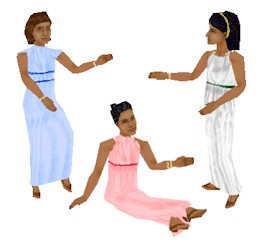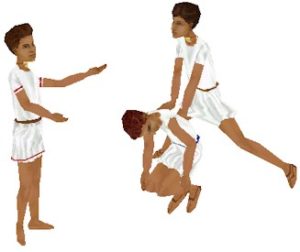Here are some facts about Ancient Roman Children:
Birth of a child in ancient Rome
In ancient Rome, as soon as a child was born, it was laid at its father’s feet. If he raised the child in his arms, he was acknowledged as his own and admitting it to all rights and privileges of membership in a Roman family. If he did not take it out, the child was an outcast, without family or protection.

In early Rome, each family from children up to grandparents lived in one home. The head of the family was the oldest male. The head of the household had authority even over the grown members of the family. Women had no authority. The role of the woman was to take care of the children.

Most children in Roman times did not go to school. Only quite rich families could afford to pay a teacher. Most schools were in towns. Not many girls went to school, but some were taught at home by tutors, who have often educated slaves.
Boys from rich families learned history, maths, and literature at school, to prepare them for jobs in the army or government. In poor families, girls and boys had to work, helping their parents.
Growing up with Girls and Boys in ancient Roman times
No special ceremony marked a girl’s passing into womanhood, but when a boy reached his majority, he discarded the crimson-bordered toga (toga praetexta) of a child and donned the pure white toga of a man. The year of the boy’s coming of age varied, somewhat on his physical and intellectual development, somewhat on his father’s decision, more perhaps on the time in which he lived.
Many girls were married at the age of 14. Marriages were often arranged between families. A man could divorce his wife if she did not give birth to a son. Many women died young (in their 30s) because childbirth could be dangerous, and diseases were common.
Ancient Roman Children’s Toys
Ancient Roman child’s first toys were the tiny ones of the compendia. Then came rag dolls and dolls of clay or wax, some with jointed arms and legs. We hear of ivory letters like our letter blocks, carts for mice, tops, and hoops driven with sticks, stilts and balls. Dogs were common and favorite pets; cats began to be known at Rome in the first century A.D.
Children in ancient Rome used wax tablets. They would scratch words or numbers in the wax with a pointed stick. Roman books were on rolls of paper called scrolls. Each end of the paper was attached to a rod. The reader had to unroll each page to read the book. People used small reeds to write on the scrolls. The ink was made from a kind of tar called a pitch or from an octopus.




